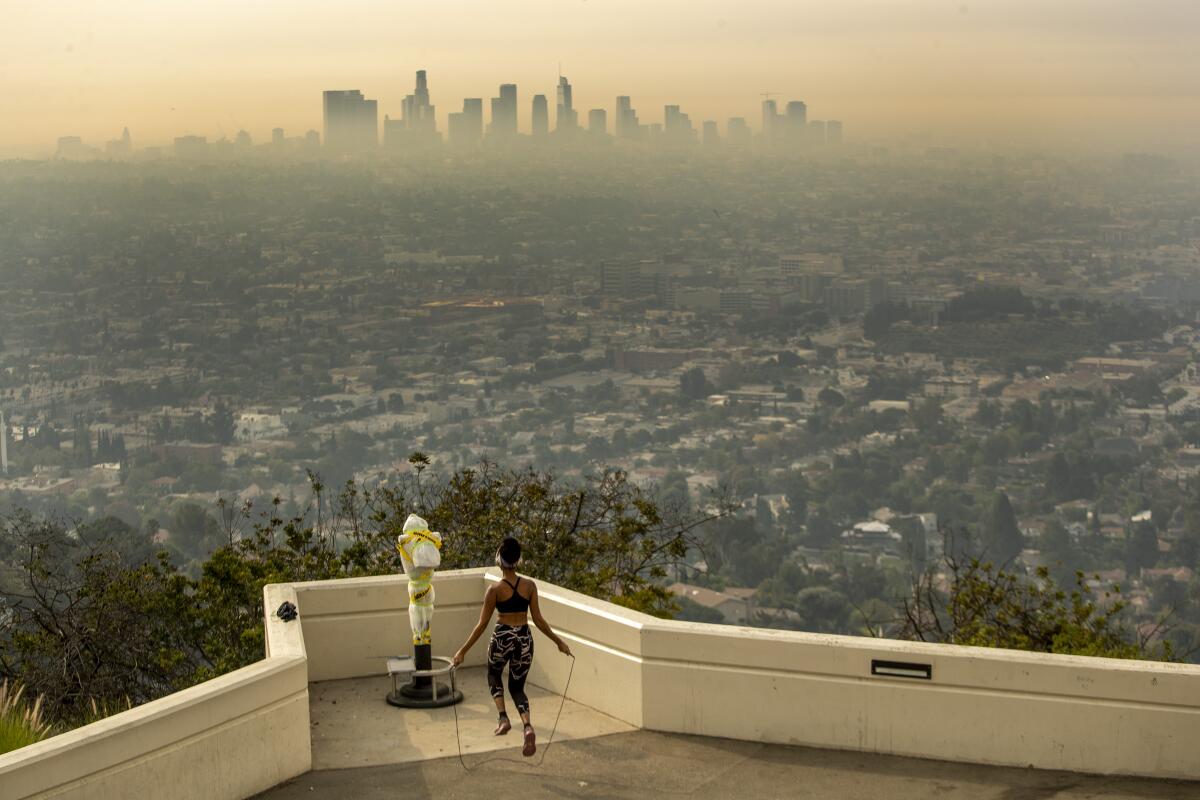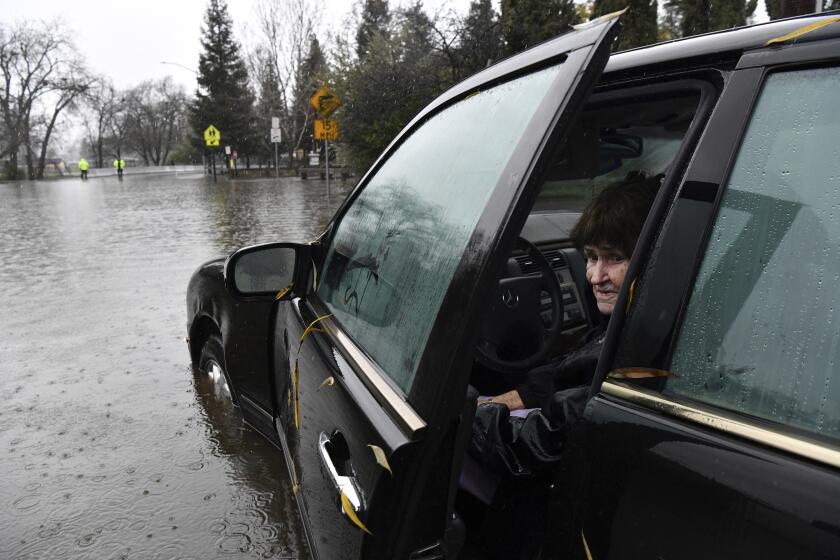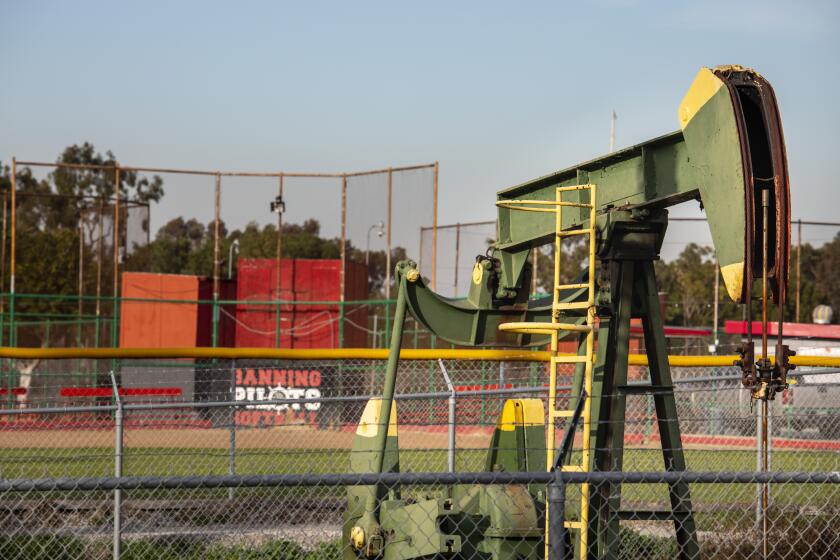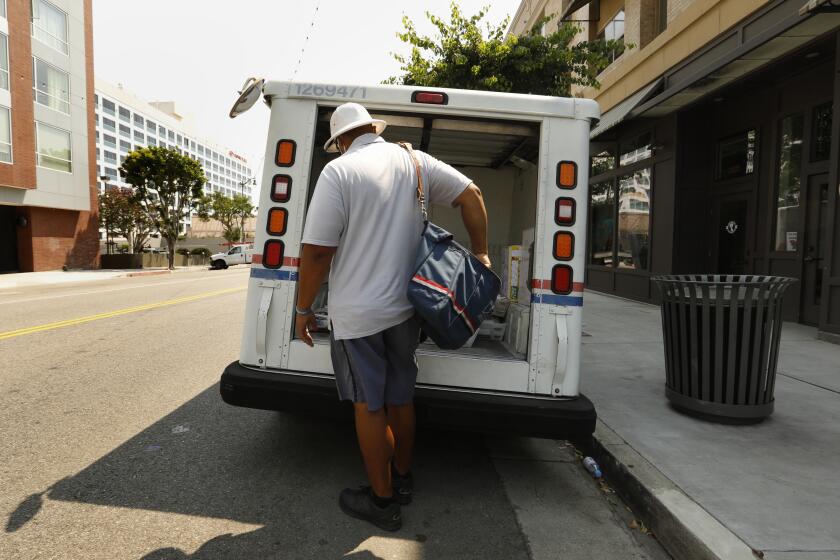Editorial: We know soot pollution is deadly. The EPA needs tougher standards to protect public health

The recent announcement from the U.S. Environmental Protection Agency that the federal government plans to strengthen the nation’s air quality standards for deadly fine particle pollution, or soot, is, to some degree, a sign of progress. The Trump administration, after all, ignored the science and refused to update these life-saving health standards in 2020.
But the Biden administration’s proposal does no better in one important regard. Although the EPA proposed tightening the annual limit on this lung-damaging type of pollution, also known as PM2.5, the agency said it planned to make no updates to the 24-hour limit on soot — which is the standard designed to protect people from short-term spikes in unhealthy air quality.
That is at odds with the advice of the agency’s Clean Air Scientific Advisory Committee. A majority of that panel of experts recommended strengthening the 24-hour standard based on health studies showing that the current level “is not adequately protective” against illness and death.
Even as California gets yet another atmospheric river blast and snowpack nears twice the average for this date, we’re still in grave danger of running out of water.
Michael S. Regan, the EPA administrator, should revise the plan so that it follows the health science and lowers both the annual and 24-hour limits for this pervasive and deadly pollution.
Fine particulate matter, or soot, can lodge deep in the lungs and enter the bloodstream, triggering asthma, heart attacks, strokes and other health problems. It is the main reason air pollution remains the nation’s biggest environmental health risk, linked to more U.S. deaths each year than are caused by homicides and car crashes combined.
This form of pollution comes from vehicles, power plants and other combustion sources. But in the western U.S. in particular, a growing share comes from climate change-fueled wildfires, which are erasing years of air quality improvements.
There are two air quality standards for fine particle pollution: one that is measured as an annual average and is meant to protect the public from chronic exposure to unhealthy air; the other is a daily average that is designed to protect people from short-term, peak concentrations that are also linked to premature deaths. Although the E.P.A. has proposed strengthening the annual limit from 12 micrograms per cubic meter of air to a more protective level between 9 and 10, it would leave the daily limit unchanged at 35 micrograms per cubic meter of air — even though its scientific advisory panel endorsed a more stringent standard in the range of 25 to 30.
Oil companies are seeking to overturn a law to ban new drilling near homes and schools. Gov. Newsom can use his administrative power to say no to new drilling.
EPA spokesperson Shayla Powell said that “in most locations, a more stringent annual standard will ensure that daily peaks are well controlled,” with concentrations below 25 micrograms per cubic meter. But leaving the 24-hour standard at 35 micrograms — the level set 16 years ago — would be dangerous to public health. The EPA proposal includes some tweaks to the Air Quality Index, but the threshold for declaring unsafe levels of pollution would be allowed to remain the same.
Scientists have known for years now that air currently categorized as “moderate,” or yellow, on the daily Air Quality Index due to elevated levels of fine particulate matter can pose significant health risks even though it is within the daily limit and deemed “acceptable” because it is classified below the orange category labeled “unhealthy for sensitive groups.”
Health studies have found that air pollution increases the risk of early death at levels far below EPA limits and that reducing fine particle pollution levels by even 1 microgram per cubic meter would save some 12,000 lives each year. The increasing number of smoky days and their episodic nature show the need for an Air Quality Index that better reflects the danger posed by this kind of pollution.
Reviewing and updating air quality standards every five years as required under the Clean Air Act is one of the most important environmental actions a president can take, but has also been one of the most politically charged. Democratic and Republican administrations have declined to strengthen them, fearing reprisal from businesses interests that could be forced to cut emissions if states fall out of compliance with federal standards. Industry groups claim that stronger standards will hurt the economy.
The U.S. Postal Service’s plan to electrify its fleet of delivery vehicles is a big win for the climate and public health.
But the Clean Air Act requires the EPA to set these standards based only on what is necessary to protect public health “with an adequate margin of safety” and without considering the costs.
Nowhere is the need to uphold that obligation more consequential than in California, with communities in the Central Valley, Bay Area and Greater Los Angeles dominating the national list of places having the worst-polluted air. Harmed most are low-income communities and people of color who are exposed to fine particle pollution at disproportionately high levels and are at higher risk of getting sick or dying.
Regan, who during his tenure as EPA administrator has sought to focus on environmental justice, now has a big opportunity to put his priorities into practice. He should listen to the science, public health experts and environmental justice communities and strengthen these standards before finalizing them later this year.
More to Read
A cure for the common opinion
Get thought-provoking perspectives with our weekly newsletter.
You may occasionally receive promotional content from the Los Angeles Times.













